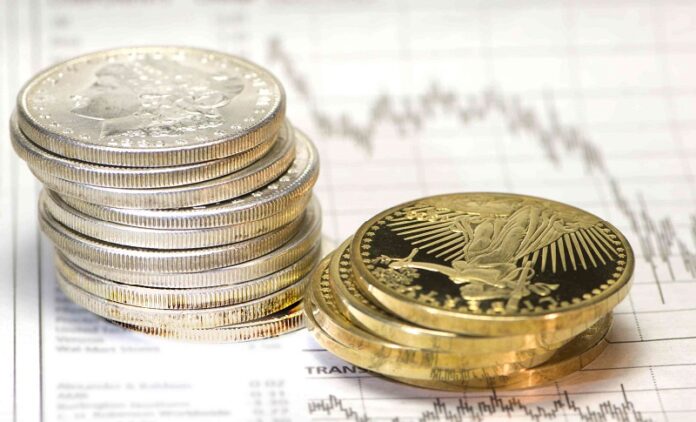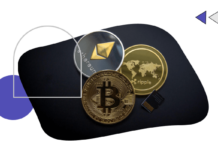Investing in precious metals is an increasingly popular way to diversify a portfolio. According to the World Gold Council, gold demand rose by 4% between 2017 and 2018 due to investors seeking safe havens amidst market volatility. With more people investing in gold, silver, platinum and other precious metals, understanding the role of diversification in building a balanced investment portfolio has become essential.
This article will dive into important considerations when it comes to diversifying investments with precious metals. It will focus on topics such as asset allocation, risk management strategies and how they can be used to maximize returns while minimizing risks.
The article will also explore the pros and cons of various types of investments including stocks, bonds and commodities. Finally, readers will learn about ways that they can incorporate precious metal investments into their existing portfolios for maximum benefit.
By providing information on important concepts like asset allocation, risk management strategies and different types of investments, this article aims to equip readers with valuable knowledge necessary for smart investing decisions. After reading this piece, readers should have a better understanding of how best to use precious metal investments within a diverse portfolio – helping them make informed choices that lead to financial success!
Precious Metals in a Nutshell
Precious metals are a special kind of commodity that have high economic value due to their rareness and usage in various industries. They include gold, silver, platinum and palladium, among others explained here: https://preciousmetalsiracompanies.org/.
These metals can be used for investment purposes or as an inflation hedge since they tend to retain their purchasing power over time. Precious metal prices are highly volatile; this means investors must pay close attention to the market when making decisions about buying and selling these commodities.
Investing in precious metals can provide a portfolio with diversification benefits because it offers exposure to assets which may behave differently from stocks and bonds during times of financial stress.
The performance of different types of assets often move independently so owning a mix of them is important for managing risk. Diversifying investments across multiple asset classes will help reduce overall portfolio volatility and create more consistent returns in both rising and falling markets.
What Do I Get From it?
Making a well-rounded portfolio is key to any long-term investing strategy. Diversifying investments with precious metals can provide numerous advantages, which many investors overlook. Precious metals are renowned for their stability and resilience against economic uncertainty, making them ideal for protecting an investor’s wealth during market downturns.
Gold, in particular, has been used as money since ancient civilizations and remains one of the most stable forms of currency today; it’s also traditionally seen as a safe haven asset that retains its value over time.
Silver prices respond more quickly to changes in the global economy than gold; however, both have proven useful when inflation threatens to erode other investment values. Investing in platinum or palladium can offer even greater diversity within a portfolio by providing exposure to industrial markets such as automotive manufacturing or electronics production.
Precious metals also provide substantial tax benefits when held outside of retirement accounts due to their low correlation with stocks and bonds. This means they may not be subject to capital gains taxes if sold at a profit on the open market after being held for more than one year and taken out of IRAs or 401(k) plans.
These assets require minimal maintenance costs compared to those associated with traditional stock portfolios, allowing investors to save considerable amounts of money through reduced fees and commissions paid directly from trading activities. With so many potential rewards available, diversifying into precious metal investments can prove beneficial for almost any investor looking to build a balanced portfolio.
Strategies for Building a Balanced Portfolio With Precious Metals
It is important to consider diversification when building a balanced investment portfolio. This means investing in different asset classes, such as bonds and stocks, and even across different sectors of the same industry. Additionally, investors should look into spreading their investments over multiple types of precious metals. By doing this, it helps spread out the risk associated with each type of metal, which can reduce overall volatility and create a long-term strategy for success.
When constructing a portfolio that includes both paper assets like stocks or bonds and physical assets like gold or silver coins, there are several factors to keep in mind. First off, investors need to decide how much capital they want allocated toward each asset class.
It’s also wise to pay attention to market trends and seasonal movements within the sector that could affect prices. Lastly, one must be aware of any tax implications associated with owning certain precious metals. All these considerations will help an investor build an effective portfolio that can provide returns over time while protecting against down markets and economic uncertainty.
Conclusion
The sun shined brightly on the horizon, a new day of possibility. As dawn broke and brought with it opportunity, one particular investment vehicle came to mind: precious metals.
Precious metal investing offers a unique benefit in that it can provide diversification for an investor’s portfolio, allowing them to spread out risk while still potentially realizing gains. It is here where investors must be astute; they need to know how to build their portfolios in order to maximize success.
Precious metal investments come in many forms – gold coins, silver bars and platinum bullion are just some examples- and each type presents its own set of opportunities and challenges.
To construct a balanced portfolio, investors should consider factors such as market conditions and historical returns when selecting which types of precious metals will best serve their needs. Studies have shown that proper asset allocation can help cushion against downturns by providing stability during volatile market cycles.
In conclusion, the key to building a successful investment portfolio lies in understanding the role of diversification using precious metals as part of your strategy.
By properly allocating assets across different markets and balancing risk versus reward, savvy investors can achieve long term growth without sacrificing security or liquidity along the way. With the right knowledge at hand and creative strategies put into practice, you too could shine like a beacon amidst the financial landscape!








